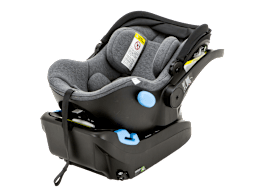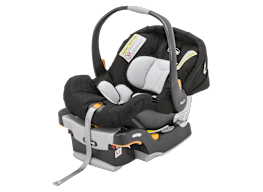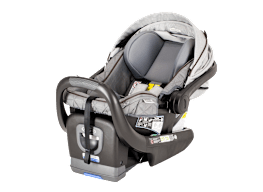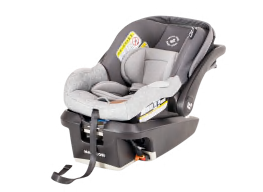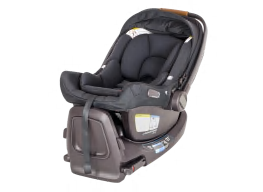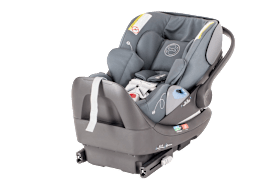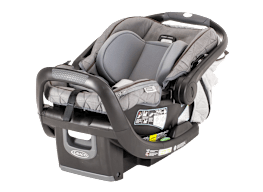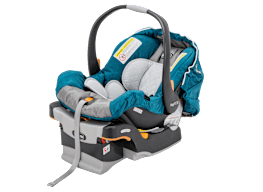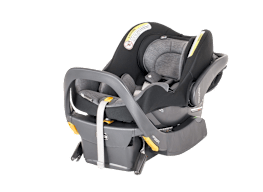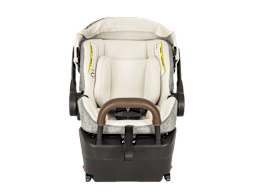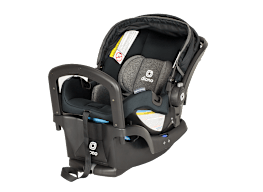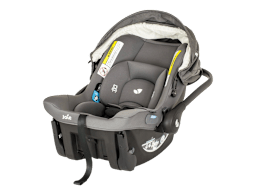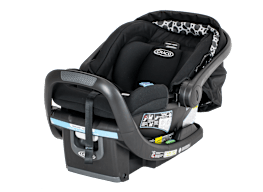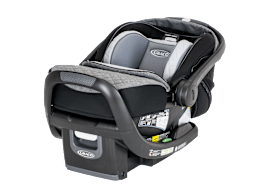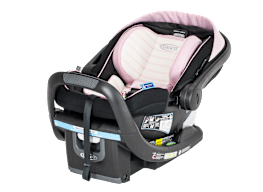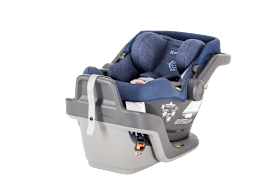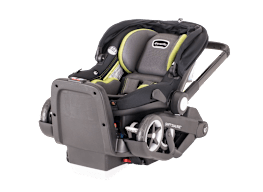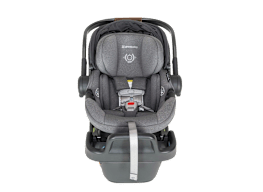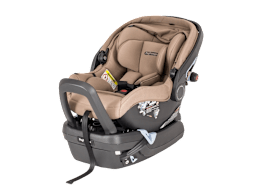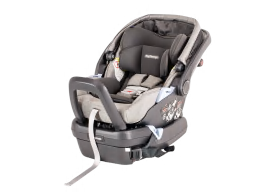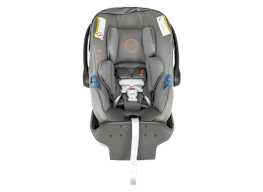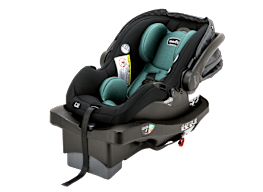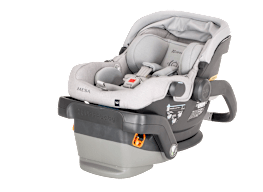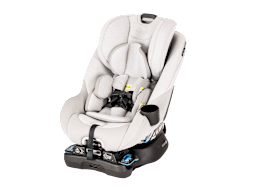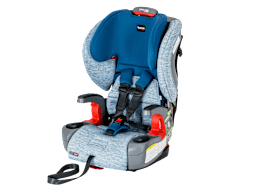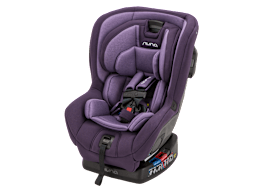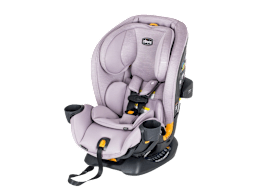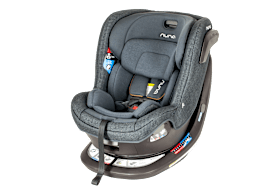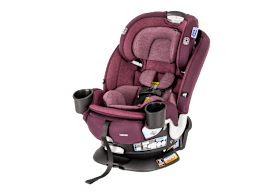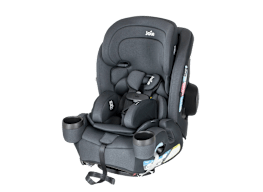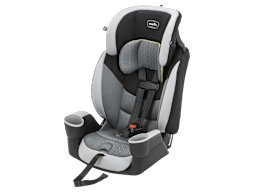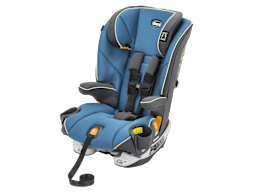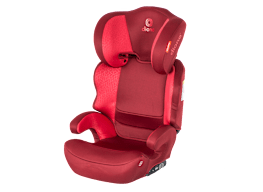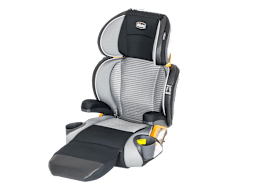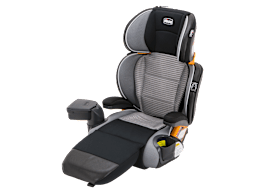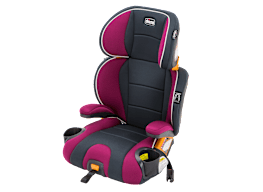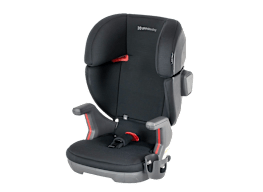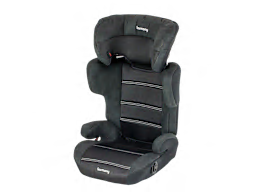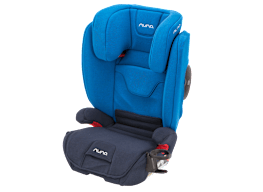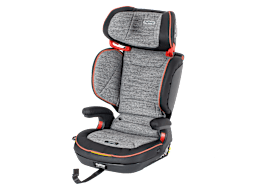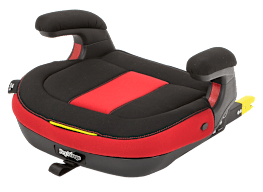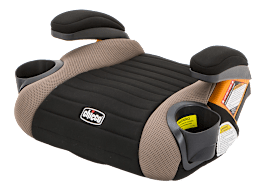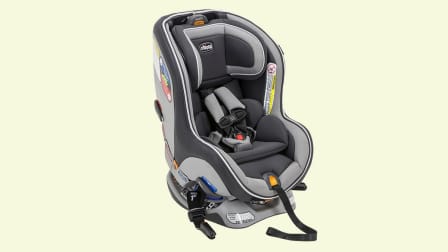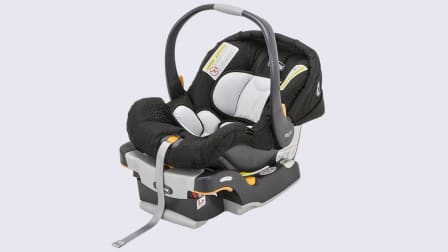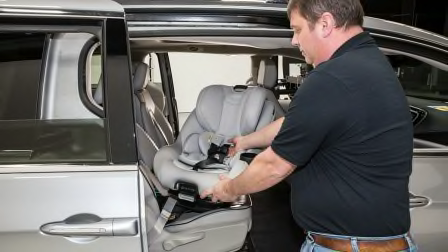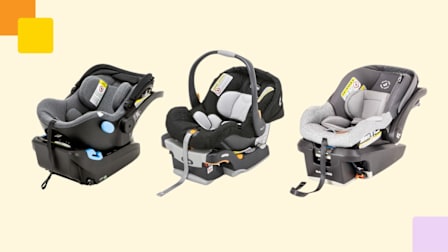When Should You Switch Car Seats?
Here’s when and how to safely transition from an infant car seat to a convertible or all-in-one car seat, and then to a belt-positioning booster seat
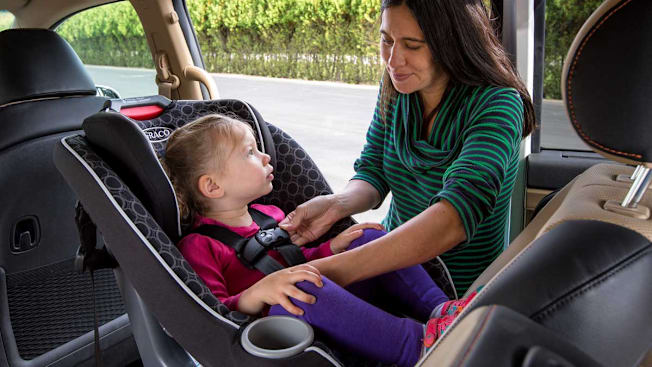
Of all the purchases you’ll make for your child, a car seat is one of the most important. But this isn’t always a one-time investment: Unless you choose an all-in-one car seat, your child will upgrade car seats at least once, and perhaps twice, as they grow from tiny newborn to a big kid ready for a seat belt alone. And selecting the right car seat—meaning the one that’s appropriate for your child’s age, weight, and height at every stage—is absolutely critical for their safety.
“Children are not mini adults,” says Michael Bloch, Consumer Reports’ child seat project leader, who helps lead CR’s car seat testing program. “While they look similar, their body structures are disproportionate and not fully formed. Each stage of a child seat offers optimal protection for the stage of growth they are in.”
Here’s what parents need to know about navigating the various car seat configurations for your child, including when to upgrade from an infant car seat, when to switch to a convertible or all-in-one car seat, when to turn your child’s car seat forward-facing, and how to tell whether your older kid is finally ready for a belt-positioning booster seat.
- Stage 1: Rear-Facing Infant, Convertible, or All-in-One Car Seat
- Stage 2: Rear-Facing Convertible or All-in-One Car Seat
- Stage 3: Forward-Facing Convertible or All-in-One Car Seat
- Stage 4: Harnessed Booster Seat or Seat-Belt-Positioning Booster Seat
- Stage 5: Vehicle Seat Belt
- Other Reasons to Switch Car Seats
Stage 1: Rear-Facing Infant, Convertible, or All-in-One Car Seat
Recommended age range: Birth through age 1 (for an infant car seat) or newborn through at least age 2 (for a rear-facing convertible or all-in-one car seat).
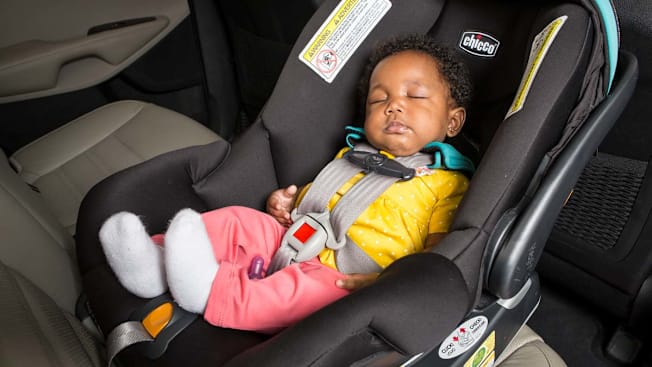
Photo: Consumer Reports Photo: Consumer Reports
There are a few types of car seats that can transport the littlest babies. Infant car seats, which tend to be smaller and more portable than other options, are a popular choice. These are rear-facing-only car seats, meaning they can’t be turned around to face forward when your baby is older.
“Their benefit is a removable carrier that allows parents to buckle and prepare a child for travel outside of the car in a more convenient environment,” says Bloch. They usually include a carrying handle and clip in and out of a base installed in your car. Some infant car seat bases include additional features like a load leg, which helps absorb extra energy in the event of crash, or an optional anti-rebound bar.
Another benefit is that infant car seats can often be used as part of a travel system. These car seat and stroller combos make it seamless to get your baby in and out of the car (and back in again).
Convertible car seats are bulkier and less portable than infant seats, but many parents choose them from day one due to their longer lifespan. These types of car seats have higher weight and height limits and can be positioned either rear- or forward-facing so that as your baby grows, your convertible car seat can “convert” to be used in different positions. Most convertible seats can accommodate newborns, as long as your baby meets the minimum weight and height requirements, or they can be the next step up after your child outgrows his or her infant car seat.
Finally, there are all-in-one car seats. As the name suggests, these seats are cleverly designed to be an all-in-one solution. They can be used rear-facing for infants, then forward-facing, and eventually turned into a belt-positioning booster for older kids.
All-in-one seats can be an appealing choice because they offer excellent value. The downside is they’re less convenient to move in and out of vehicles, and they’re often large and heavy, so they may not fit in smaller cars. “Although the thought of this being the final seat purchased may be appealing, all-in-ones are bulky seats,” Bloch says. “Even in booster mode, they maintain their bulk.”
Each type of car seat in this first stage has pros and cons. What’s most important at this stage is that whether you choose an infant car seat, a convertible, or an all-in-one, it should be installed rear-facing. This position is the safest for babies in the event of a crash and should be used as long as possible.
Try CR's Car Seat Finder
Our interactive tool will help you find a car seat that fits your lifestyle, vehicle, and budget.
When to Switch From an Infant Car Seat to a Rear-Facing Convertible or All-in-One Seat
Infant car seats are designed for the youngest babies and have lower weight and height limits than convertible or all-in-one car seats. The exact limits vary depending on the brand, but children usually outgrow their infant car seats when they reach 30 pounds or the car seat’s height limit, which can vary by model.
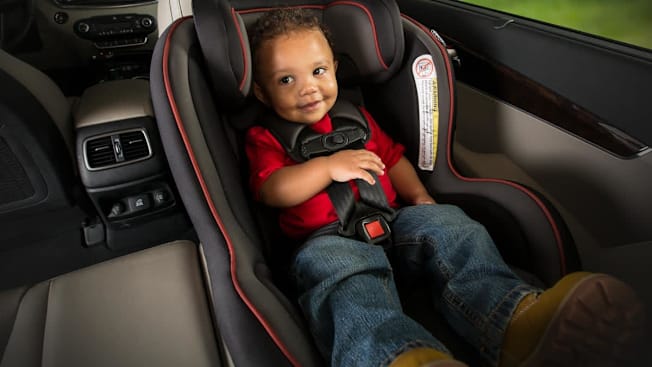
Photo: Consumer Reports Photo: Consumer Reports
You should transition from an infant car seat to a rear-facing convertible or all-in-one seat once your child reaches the height or weight limit for their infant car seat, whichever comes first. You can find the weight and height limits for your car seat model on the seat label or in the manual. Many states require children to ride rear-facing until age 2—be sure to look up the rules for your state.
Based on CR’s independent car seat crash-test results, if your child has reached their first birthday and still fits in a rear-facing infant seat, the safest move is to switch to a rear-facing convertible or all-in-one car seat. In CR’s tests, a 12-month-old child dummy was far more likely to hit their head on the back of the front seat while in a rear-facing infant seat than they would be if they were riding in a rear-facing convertible or all-in-one seat. This is why CR’s experts recommend making the switch from a rear-facing infant seat to a rear-facing convertible or all-in-one around the first birthday.
Keep in mind, too, that your child may very well hit the height limit for their infant car seat before they hit the weight limit. “The biggest factor will be height,” Bloch says. “Infant seats are marketed around weight limits, which most children will never make it to.”
Stage 2: Rear-Facing Convertible or All-in-One Car Seat
Recommended age range: Birth to at least 2 years old—for safety, keep your child riding rear-facing in their car seat as long as possible.
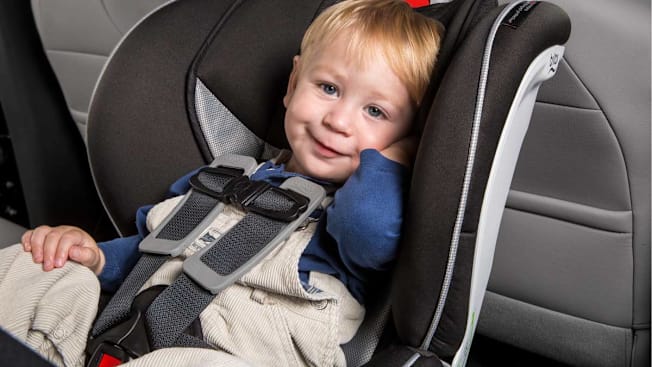
Photo: Consumer Reports Photo: Consumer Reports
Stage two will look the same as stage one for those families who opted to use a convertible or all-in-one car seat for their babies from birth. But if you originally chose an infant car seat, your child should make the switch to a rear-facing convertible seat or all-in-one car seat by their first birthday. This is because, as mentioned above, rear-facing convertible and all-in-one seats provide added protection for your child’s head from contacting the back of the front seat in the event of a crash, as CR’s tests have found.
Rear-facing convertible and all-in-one car seats also have an advantage over infant seats in that they can be used longer in rear-facing mode because their harness systems support higher weight and height limits.
When to Turn a Rear-Facing Car Seat to the Forward-Facing Position
It can be tempting to switch your convertible or all-in-one car seat forward as soon as your child turns 2. Many parents find it easier to interact with their children in the car when they’re facing forward.
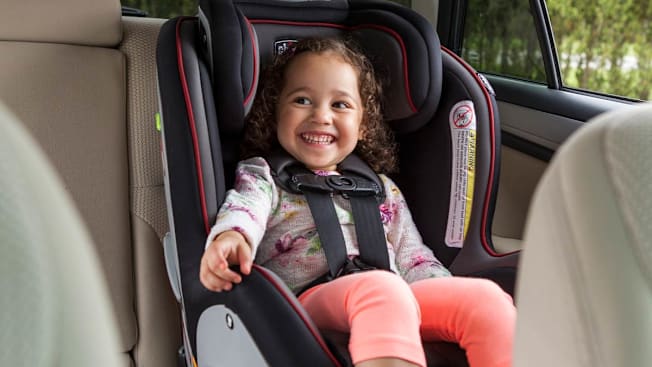
Photo: Consumer Reports Photo: Consumer Reports
But it’s important to keep your child rear-facing for as long as possible. This position is safer for children and provides better protection in the event of a crash.
“Young children’s heads are disproportionately large for their bodies, and their necks are not fully formed when compared to an adult,” Bloch says. “Seats installed rear-facing protect the head, neck, and spine by keeping them in alignment while distributing crash forces across the back of the car seat.”
Your child should remain rear-facing until they meet the very top of the manufacturer’s weight or height limits (whichever comes first), according to the American Academy of Pediatrics and the National Highway Traffic Safety Administration. These limits vary but are usually somewhere between 40 and 50 pounds, which many kids won’t reach until age 3 or 4.
“The longer children remain rear-facing, the more protected they are,” Bloch says. “Additionally, kids are far more comfortable than parents perceive when rear-facing. There is a lower incidence of leg and foot injuries when rear-facing compared to the severe head and neck injuries when transitioned to forward-facing too early.”
Stage 3: Forward-Facing Convertible or All-in-One Car Seat
Recommended age range: No earlier than age 2, until at least age 4 or 5.
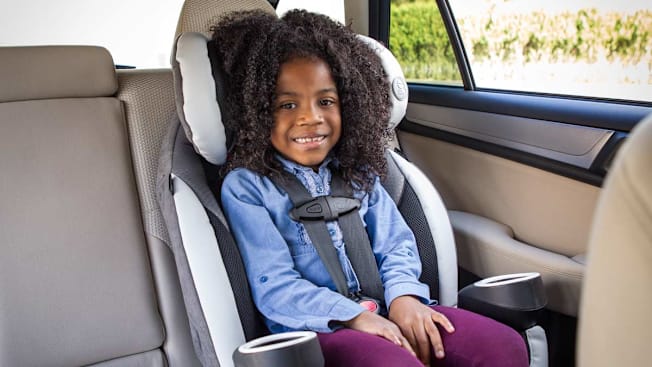
Photo: Consumer Reports Photo: Consumer Reports
Once your child has met the highest weight or height limits in the rear-facing position of your convertible or all-in-one car seat, they will face forward in that same seat for the next few years.
These seats all have a five-point harness and tether strap, so they limit your child’s movement and are safer than a seat-belt-positioning booster seat in the event of a crash. That’s because the harness distributes crash forces over a wider area than a seat belt alone. Most kids are able to continue using their forward-facing car seat with a harness until sometime between ages 4 and 7. A few U.S. states have rules requiring children to remain in a forward-facing harnessed seat until at least age 5. Your child can graduate to a seat-belt-positioning booster seat once they exceed the weight or height limit on their forward-facing car seat (more on this below).
But be sure to familiarize yourself with the manufacturer’s recommended installation method for your forward-facing convertible or all-in-one car seat. Some seats, particularly heavy ones, can’t be installed with the vehicle’s built-in LATCH system as your child grows because the weight of your child combined with the weight of the seat will eventually exceed the vehicle’s LATCH capacity. You can find the LATCH weight limits labeled on the car seat—once that LATCH capacity is met, you’ll need to switch the seat from a LATCH installation to a vehicle seat belt installation.
Stage 4: Harnessed Booster Seat or Seat-Belt-Positioning Booster Seat
Recommended age range: Ages 6 to 10.
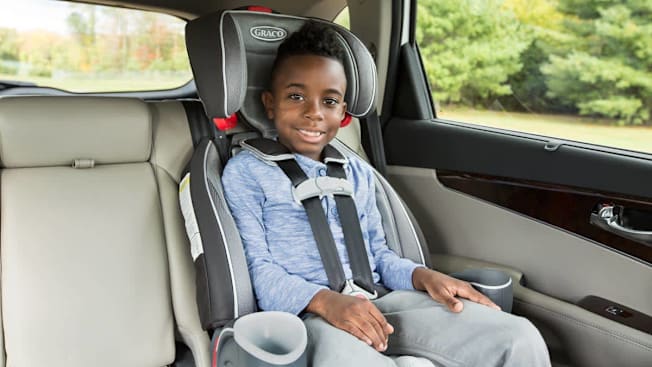
Photo: Consumer Reports Photo: Consumer Reports
As with the transition from rear- to forward-facing on your convertible or all-in-one car seat, you should wait as long as possible before upgrading to a belt-positioning highback booster seat. Some kids may still benefit from using a booster seat with a five-point harness, especially if they have difficulty keeping the seat belt properly positioned across their chest and hips.
By contrast, belt-positioning booster seats use the car seat’s seat belt rather than a five-point harness. These seats provide your child with added height, correctly positioning the vehicle’s seat belt across a child’s shoulder and lap to ensure a proper fit, but it’s important to check whether your child is truly ready for seat belt use.
“While parents are focused on weight, height, and age when deciding when to switch to a booster, they also need to be assessing if their child can sit correctly for the entire ride,” says Bloch. “A child that falls asleep in a five-point harness is still fully protected, while a child that falls asleep in a booster may slouch out of position for the seat belt to work optimally.”
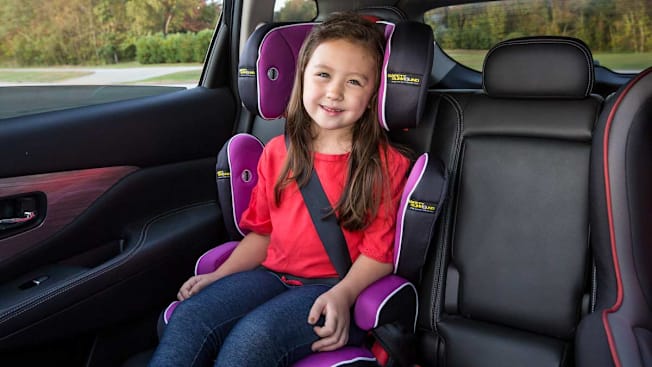
Photo: Consumer Reports Photo: Consumer Reports
Booster seats can be purchased in two main styles: highback and backless. Both types of boosters can be used only forward-facing. Backless models are portable and can be easier to install, but CR recommends highback boosters because they better position the seat belt and offer superior side-impact protection.
Once your child is ready for a booster, remember that they should still always sit in the back seat of the car.
Stage 5: Vehicle Seat Belt
Recommended age range: Ages 10 and older.
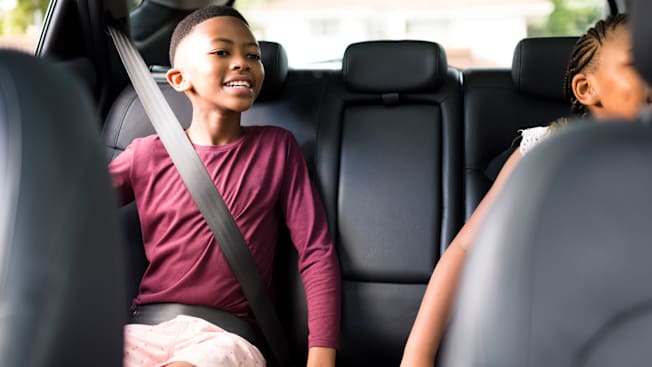
Photo: Getty Images Photo: Getty Images
Your child is finally ready for a “regular” seat belt once they are tall enough for it to fit correctly across their shoulder and chest and sit properly on their hips across the upper thighs, which usually happens when they reach 4 feet, 9 inches. Most kids won’t hit this height until sometime between ages 10 and 12, the AAP says. They may also be ready for the vehicle seat belt alone when they can comfortably bend their knees over the seat edge while sitting fully back in the seat, which will help keep them from slouching and keep the seat belt positioned correctly. At this point, you’ll also want to adjust the vehicle head restraint behind your child’s head to make sure it’s extending beyond the top of their ears.
Remember: Once your big kid has aged out of the belt-positioning booster, they should continue sitting in the back seat until at least age 13. That’s because front-seat airbags can injure young children who may not be properly restrained by a seat belt.
Find the Right Car Seat for Your Child
Use the timeline below for guidance.
CR’s Recommended Car Seat Use for Children Under the Age of 12
| Age (YEARS) |
Infant Rear-Facing |
Harnessed Rear-Facing |
Harnessed Forward-Facing |
Booster Seat |
|---|---|---|---|---|
| 0 | Recommended | Transitional | ||
| 1 | Transitional | Recommended | ||
| 2 | Transitional | Recommended | ||
| 3 | Transitional | Recommended | ||
| 4 | Recommended | Transitional | ||
| 5 | Recommended | Transitional | ||
| 6 | Transitional | Recommended | ||
| 7 | Transitional | Recommended | ||
| 8 | Transitional | Recommended | ||
| 9 | Transitional | Recommended | ||
| 10 | Transitional | |||
| 11 | Transitional |
- Recommended Use Period
- Transition Periods (Safe to use depending on the seat's limits and your child's height and weight.)
Shopping for a Car Seat?
See our car seat ratings and buying guide.
Other Reasons to Switch Car Seats
Other than transitioning from one stage to the next, there are some situations that call for fully replacing your child’s car seat:
Your child’s car seat has expired. Many parents don’t realize that child car seats carry expiration dates. This is particularly important when you have several children and use the same car seat for each one. If you’ve been passing down one model for many years, you may be due for a replacement.
The owner’s manual or seat label should tell you when the seat was built and when it should no longer be used. The lifespan is usually six years (or 10 years for all-in-one or booster seats).
Expiration dates ensure that key components of the seat haven’t become too worn and that the seat meets contemporary safety standards, which are regularly reviewed and updated.
Your child’s car seat has been in a crash. Some seats can continue to be used after a minor fender bender. But the National Highway Traffic Safety Administration recommends replacing a seat if it was in a collision that involved injuries or required the vehicle to be towed, if the airbags were deployed, or if the seat or the door nearest the seat was damaged. You’ll also want to confirm what the car seat manufacturer’s guidelines are in the car seat manual because some will suggest replacing a car seat after even a minor crash. Read more about how to tell whether you need to replace your car seat after a crash.
Your child’s car seat is damaged. Daily use, heating and cooling cycles, and less-than-careful storage can take a toll on a car seat’s structure. Parents should check for cracks, loose parts, and worn or fraying straps and fasteners. If the seat is damaged, it might not offer as much protection in a crash as it needs to.
Even if you’re replacing it with the same type of seat, one with new, undamaged components will provide better protection.
Keep in mind that replacing an expired or damaged car seat with a used model isn’t recommended. Car seats can be expensive, and it’s tempting to shop secondhand. Unfortunately, you usually can’t be 100 percent sure of a used car seat’s history, including whether it was involved in a crash, its expiration date, or its recall status. Without that essential information, you could put your child at risk.
Instead, keep an eye out for car seat trade-in events, which are typically offered twice a year at Target and other retailers. These events make buying a car seat more affordable because they allow you to donate your old car seat for recycling, then purchase a new model (or other qualifying baby gear, like strollers or travel cribs) at a discount.
What to Know Before Heading to a Car Seat Trade-In Event
CR’s car seat expert Emily Thomas breaks down the pros and cons of these popular discount drives.
@consumerreports There are plenty of car-seat deals and trade-in events out there, but be careful about making the switch too soon. Learn more through the link in our bio. #carseat #parentsoftiktok #carsafety #cartok #carcommunity
♬ original sound - Consumer Reports

















